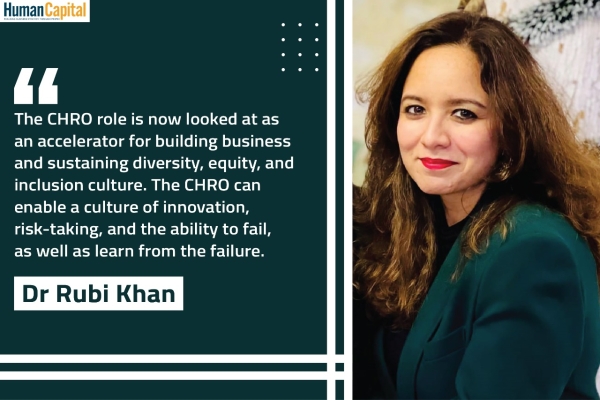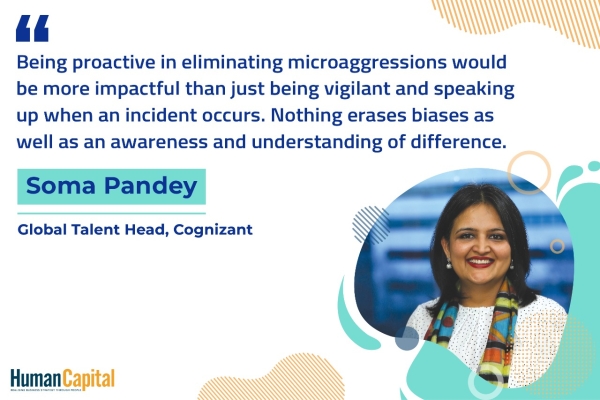While the zealous focus by companies towards acquiring talent and leveraging their skills to the fullest is evident, companies falter after this juncture since they believe that merely hiring someone appropriate for the role will get the job done.
The fundamental purpose of every business is to provide value to its customers. Once ‘what' that value is and 'how' it will be generated has been conceptualised, it then boils down to getting the right people. Ultimately, it is the people who make the value come alive: first within, and then outside in the marketplace. It is no surprise therefore that most companies recognise the importance of having a sound talent team in place, especially at middle and senior management levels. This is evident in the zealous focus they have on acquiring talent and then leveraging those skills to the fullest. However, it is my belief that companies falter after this juncture. They believe that merely hiring someone appropriate for the role will get the job done, while I would contend that it's a job well begun, but only half done.
Given today's times, it is imperative for large organisations' , middle and senior level leaders to realise that the most crucial role of a leader is to develop more leaders. That is the only way organisations can succeed and win in the middle and long term. However, the reality is different. You may have observed that many mid-level managers and senior leaders spend disproportionate time utilising and honing the functional skills and capabilities of their teams, but spend hardly any in developing their leadership potential. Which is why it is easier to find managers who are domain experts, but tougher to find those who are good people developers.
While this may be contested by some who may even argue that given the sheer demands of work, they are doing a good balancing act of building people and driving business. How else would it be possible for them to drive their teams to consistently perform, even outperform? They are great believers in giving the periodic pep talk. They also work with and/or handhold their teams and not just blindly delegate everything. Some would even contend how they make sure their teams attend trainings and conferences on a periodic basis to up their knowledge and skills. While all the above is necessary, it is insufficient, because there is a difference between managing people and developing them. Managing gets the work done, while developing gets growth - both for the individual and for the organisation.
Is HR not responsible for developing people?
The obvious answer lies in deputing this task to the Human Resource function. While this is not wrong, it is my view that development is not the sole responsibility of HR. Indeed, they should play a vital role. First and foremost, HR is responsible for creating a culture where leadership development is seen as a priority. It should make visible opportunities that exist for people development across various streams of the organisation. It should actively engage with leaders and supervisors to implant and sustain the relevance of building talent. It can acknowledge and give due credit to those who are embracing this.
However, to help employees achieve their full potential, HR requires the commitment and partnership of the supervisors. This is because, given the frequent interactions they have with the teams, supervisors are best placed to know their aspirations, capabilities, and development areas. Supervisors will also be the right individuals for assessing their progress and guiding them to become better.
Talent development: An added task
This may seem as an added burden to the managers. On the contrary, I have witnessed that when the leadership builds leaders, work gets done better. Furthermore, it is in the supervisor's own interest to focus on their team's development. Enhanced capability and better emotional intelligence of employees imply that supervisors can spend lesser time guiding and sharing feedback. Their bandwidth can get released from running daily business chores, allowing them to do a whole lot more, like meeting new people to gain fresh insights, grasping new technology, networking, keeping a tab on non-traditional competition and taking up new projects, all of which enrich them as well as the organisation.
Supervisors themselves require coaching
At this juncture, it is important to acknowledge that even if the supervisors themselves realise the benefits of developing their teams, they may not be equipped to turn this intent into action. Again, HR can pitch in. It can share best practices and recommend relevant learning and training programmes. It can periodically track progress and alleviate concerns that come along the way. Understandably, the art of learning how to groom leaders is timeconsuming, given that it requires supervisors to work for months - sometimes years - and have genuine empathy for their people. Knowing when to empower and when to direct, when to challenge and test their team, and when not to rock the boat - these skills cannot be learnt overnight. But once acquired, the efforts will pay off handsomely.
What does the outcome look like?
When leaders are just as passionate about developing their teams as they are about their line of work, simply put, magic happens:
-Their teams battle hurdles better
-They feel a stronger sense of affiliation with the organisation
-They are less likely to throw in the towel when confronted with challenges
-They are more likely to find solutions to people, process, or resource issues on their own. This effectively leads to an organisation that not merely comprises of smart and competent people, but one that is also motivated, efficient, and has a ready pool of talent grown from within to take on senior roles in future.
The flipside though, is also true. When managers fail to take care of their people, it hurts the organisation in the medium and long run. Employees do not feel energised. Monetary incentives are necessary to be doled out more often. When employees do not feel valued, the good ones are bound to leave. Often the cost of attrition is hidden. Many organisations keep a tight control on costs otherwise - rein in departmental budgets, keep a vigilant eye on margins, keep looking for ways to reduce operational expenses, and so on. But these organisations may sometimes not recognise the cost of losing their talent. Organisations must believe in the importance of developing their people. When supervisors and leaders consciously grow their teams, the entire organisation creates better and more long-lasting value for its customers.

Has COVID-19 forever changed the way we live and work?
Trending
-
SBI General Insurance Launches Digital Health Campaign
-
CredR Rolls Out 'Life Happens' Leave For Its Employees
-
Meesho Announces 30-Week Gender-Neutral Parental Leave Policy
-
Microsoft Unveils Tech Resilience Curriculum To Foster An Inclusive Future
-
60% Indian Professionals Looking For Job Change Due To COVID: Survey
-
SpringPeople And Siemens Collaborate For Digital Transformation Push
-
86% Professionals Believe Hybrid Work Is Essential For Work Life Balance: Report
-
Almost 1 In Every 3 People's Personal Life Affected Due To Work Stress
-
Meesho Rolls Out Reset And Recharge Policy For Employees
-
80% Of Talent Leaders & Academics Say Pandemic Changed Skill Needs For Youth: Report
-
Hero Electric Rolls Out 'Hero Care' Program For Employees
-
Human Capital In Collaboration With ASSOCHAM Hosts Virtual Conference
-
IKEA India, Tata STRIVE Collaborate To Create Employability And Entrepreneurship Opportunities
-
SAP India, Microsoft Launch Tech Skilling Program for Young Women
-
DXC Technology, NASSCOM Collaborate For Employability Skills Program
-
Lenskart To Hire Over 2000 Employees Across India By 2022
-
Mindtree Launches Learn-and-Earn Program
-
Tata AIA Extends 'Raksha Ka Teeka' To Its Employees
-
Swadesh Behera Is The New CPO Of Titan
-
NetConnect Global Plans To Recruit 5000 Tech Professionals In India
-
Hubhopper Plans To Hire 60% Of Indian Podcasters By 2022
-
Corporate India Needs More Women In Leadership Roles: Report
-
Aon to Invest $30 Million and Create 10,000 Apprenticeships by 2030
-
Tech Mahindra Launches ‘Gift a Career’ Initiative for Upskilling of Youth
-
40% Women Prefer Flexible Working Options in Post-COVID World: Survey
-
3 out of 4 companies believe they can effectively hire employees virtually: Report
-
Vodafone , CGI and NASSCOM Foundation launch digital skills platform
-
Odisha: Bank, postal employees to deliver cash for elderly, differently-abled persons
-
Skill India launches AI-based digital platform for "Skilled Workforce"
-
Hiring activity declines 6.73% in first quarter: Survey
-
70% startups impacted by COVID-19 pandemic
-
Bajaj Allianz Life ropes in Santanu Banerjee as CHRO
-
Over 70 Percent MSMEs look at cutting jobs to sustain businesses
-
93 Per Cent employees stressed about returning to office post-lockdown
-
Johnson & Johnson India announces family benefits for same gender partners
-
Indian firms turning friendly towards working mothers
-
Welspun India names Rajendra Mehta as new CHRO
-
Wipro partners with NASSCOM to launch Future Skills platform



Human Capital is niche media organisation for HR and Corporate. Our aim is to create an outstanding user experience for all our clients, readers, employers and employees through inspiring, industry-leading content pieces in the form of case studies, analysis, expert reports, authored articles and blogs. We cover topics such as talent acquisition, learning and development, diversity and inclusion, leadership, compensation, recruitment and many more.
Subscribe Now












































Comment